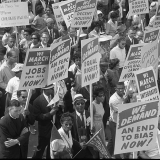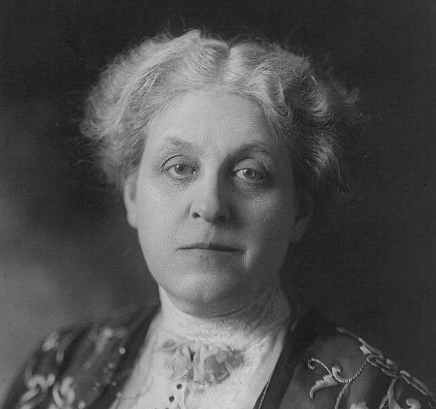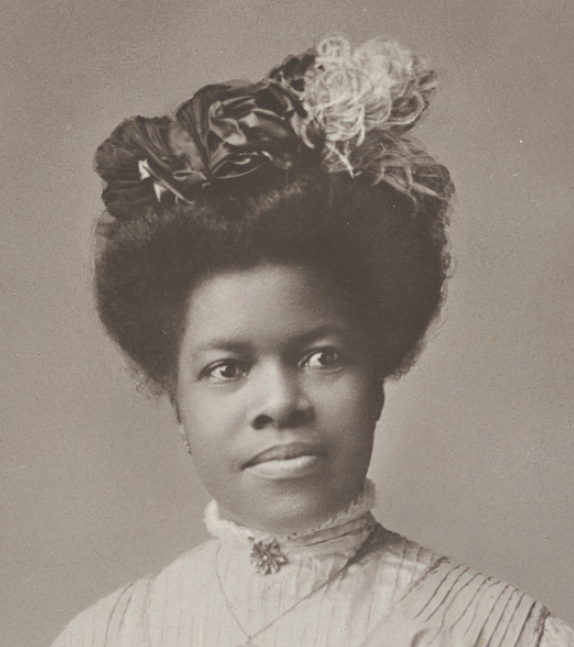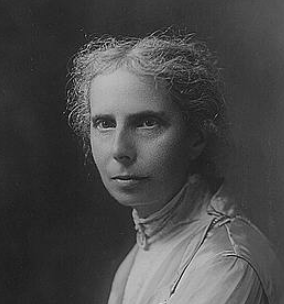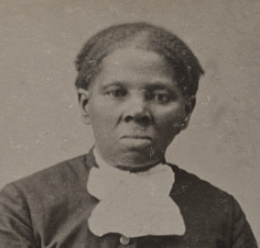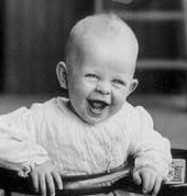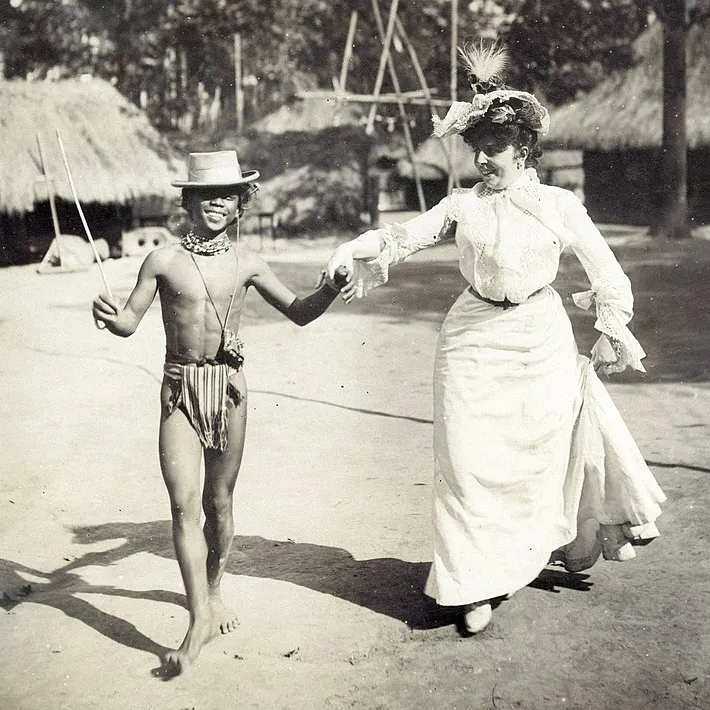
Mrs. Wilkins teaching an Igorotte boy the cakewalk at the 1904 World's Fair Source - Wikimedia
The photo shows Mrs. Wilkins, a teacher from the Philippine Reservation, teaching an Igorot boy the cakewalk. While the photo captures a moment of cultural exchange and curiosity, it also reveals the power dynamics and inequalities that shaped the fair and its audience and participants.
In 1904, the city of St. Louis hosted a grand exposition to celebrate the centennial of the Louisiana Purchase and showcase the achievements of American civilization.
Note: LOC has a large collection of photos from the Exposition here
The Louisiana Purchase International Exposition, or the St. Louis World's Fair, attracted nearly 20 million visitors from around the world, who marveled at the wonders of technology, art, agriculture, and industry displayed in more than 1,500 buildings across 1,200 acres of land.
But among the dazzling attractions, there was also a dark and disturbing spectacle: the human zoo. The fair organizers arranged for more than 2,000 indigenous people from various regions and countries to be brought to the fairgrounds and exhibited in "living displays" that purported to demonstrate their cultures, lifestyles, and levels of development.
These displays were often based on racist and imperialist assumptions that placed white Americans at the top of a hierarchy of civilization and justified their domination over other peoples.
The Philippine Reservation
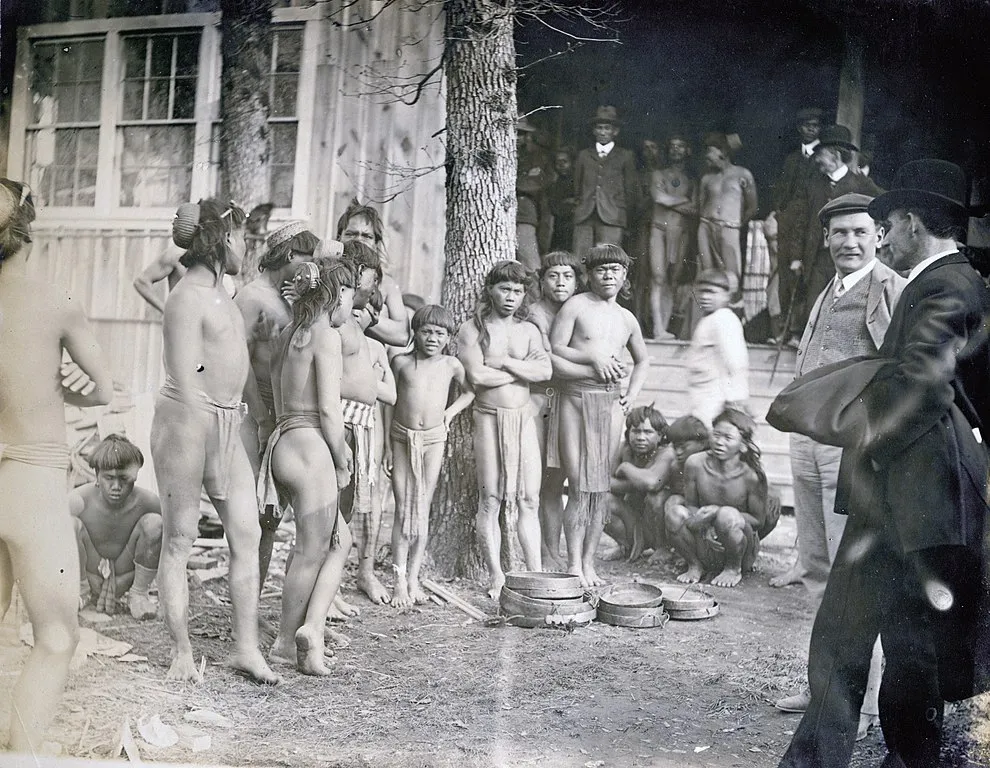
One of the largest and most popular exhibits was the Philippine Reservation, which occupied 47 acres and housed over 1,000 native Filipinos from different ethnic groups. The reservation was designed to showcase the benefits of American colonial rule in the Philippines, which had been acquired by the United States after the Spanish-American War in 1898.
The Filipinos were forced to live in replicas of their villages, wear their traditional costumes, perform their dances and rituals, and even slaughter and eat dogs as part of their daily routine.
They were also subjected to various tests and measurements by anthropologists and scientists who sought to classify them according to racial categories and physical traits.
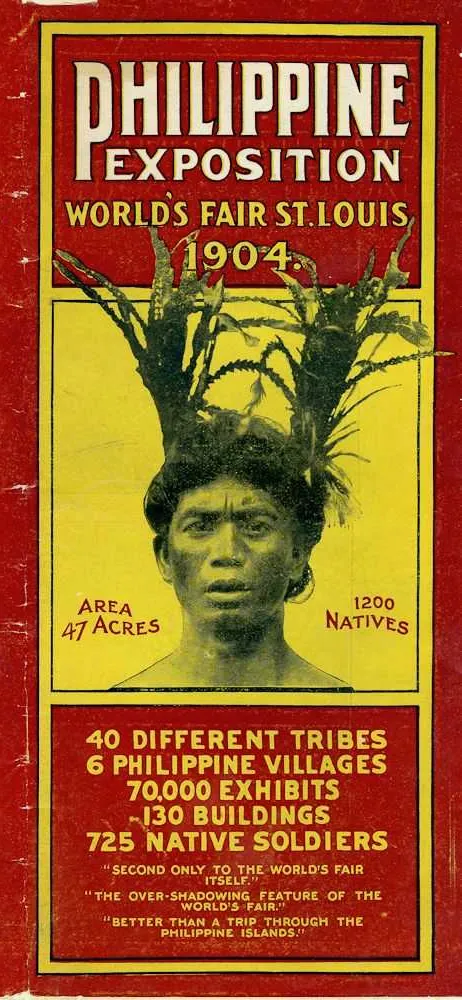
Advertisement for human exhibits from the Philippine Islands at the World's Fair, St. Louis, 1904 ~ Source - Wikimedia
The reservation also featured a mock battle between Filipino insurgents and American soldiers, which reenacted the ongoing Philippine-American War that had claimed thousands of lives. The battle was staged to portray the Filipinos as savage rebels who needed to be pacified by the superior American forces.
The fairgoers were encouraged to cheer for the Americans and boo for the Filipinos, who were often injured or killed during the performance.
The Anthropology Department
Another section of the fair that displayed human beings as objects of curiosity and study was the Anthropology Department, which was located near the Art Palace. The department was headed by W.J. McGee, a prominent ethnologist who believed that human races could be ranked according to their intelligence, morality, and progress.
He arranged for several groups of indigenous people from different continents to be exhibited in reconstructed environments that reflected their supposed stages of evolution.
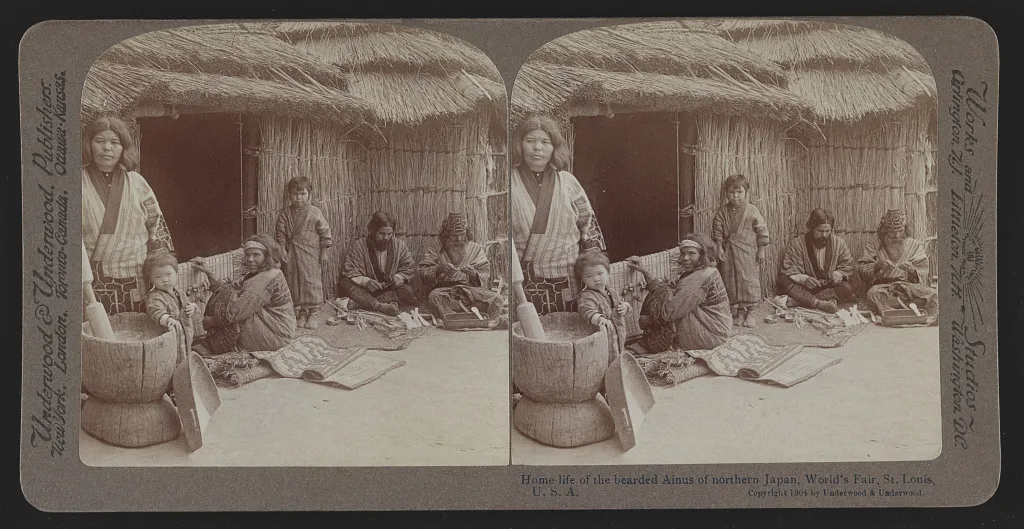
“Home life of the bearded Ainus of northern Japan” ~ Source- Library of Congress
Among these groups were the Patagonians from Argentina, the Ainu from Japan, the Igorot from the Philippines, the Apache from Arizona, the Arapaho from Wyoming, and the Pygmies from Africa.
They were expected to demonstrate their skills, crafts, games, and ceremonies for the amusement of the spectators, who often treated them with contempt or pity. Some of them were also subjected to physical examinations and psychological tests by McGee and his colleagues, who collected data on their cranial capacity, reaction time, memory, and emotions.
The Pike
The Pike was the name given to the amusement area of the fair, where visitors could find rides, games, shows, food stalls, and souvenirs. It was also where some of the most sensational and exploitative human exhibits were located.
One of them was called "Darkest Africa," which featured about 100 Africans from various tribes who were displayed in a simulated jungle setting. They were surrounded by exotic animals such as lions, elephants, giraffes, and crocodiles, which added to the illusion of a wild and primitive land.
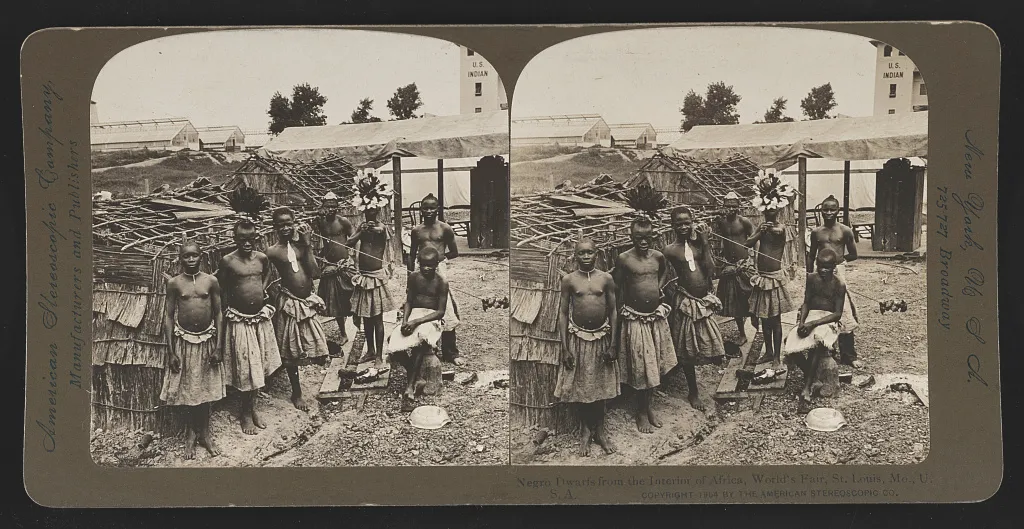
“Negro dwarfs from the interior of Africa” ~ Source - Library of Congress
Another exhibit on the Pike was called "The Streets of Cairo," which featured about 200 Arabs and Egyptians who performed dances, music, acrobatics, snake-charming, and other acts that appealed to the orientalist fantasies of the Western audience.
The most famous attraction of this exhibit was Little Egypt, a belly dancer who caused a sensation with her provocative moves and costumes. She was rumored to have invented the hoochie-coochie dance, which became a popular craze in America.
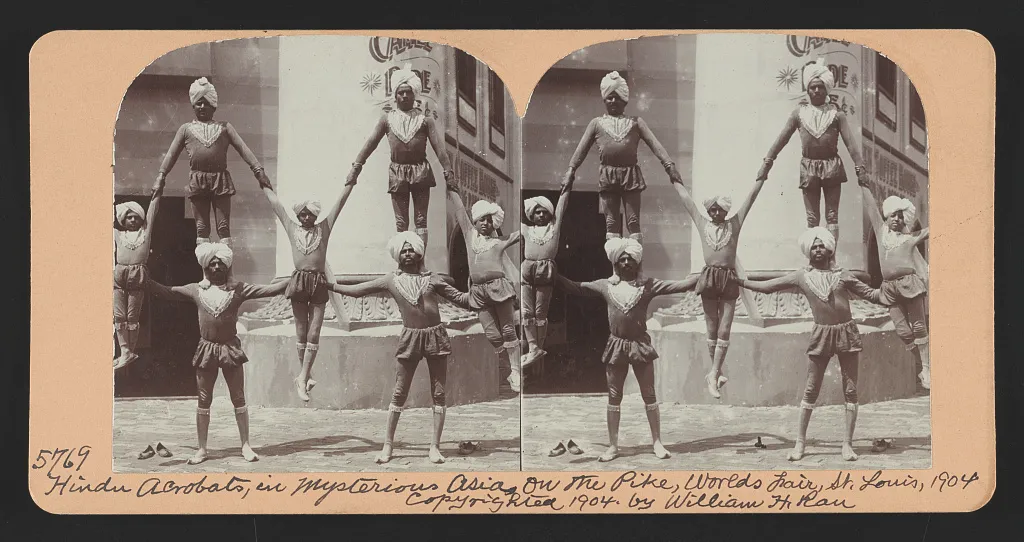
Hindu acrobats, in mysterious Asia on the Pike - Source - Library of Congress
The Legacy
The human zoo of the 1904 World's Fair in St. Louis was not an isolated phenomenon. It was part of a larger trend of exhibiting non-white people as curiosities and specimens in fairs, museums, circuses, zoos, and other venues throughout Europe and America in the late 19th and early 20th centuries.
These exhibits reflected and reinforced the racist and imperialist ideologies that justified colonialism, slavery, genocide, segregation, and discrimination against millions of people around the world.
Testimonials
- I love that there is new info on the site daily!
- I had a wonderful time working with the Library of Congress and learning about all of the resources at my fingertips!
- The TPS Teachers Network has an equal exchange of ideas. You know it's not a place where you're being judged.
- My colleagues post incredibly fine resources and ideas....the caliber of the suggestions and resources make me feel that I take a lot from it. It's a takeaway. And I hope that I can give back as much as I get.
- Going into this school year, I have a fantastic new resource for my own instruction and to share with my colleagues!
- I am very glad that I discovered the TPS Teachers Network through RQI. Great resources can be hard to find out there on the internet!

